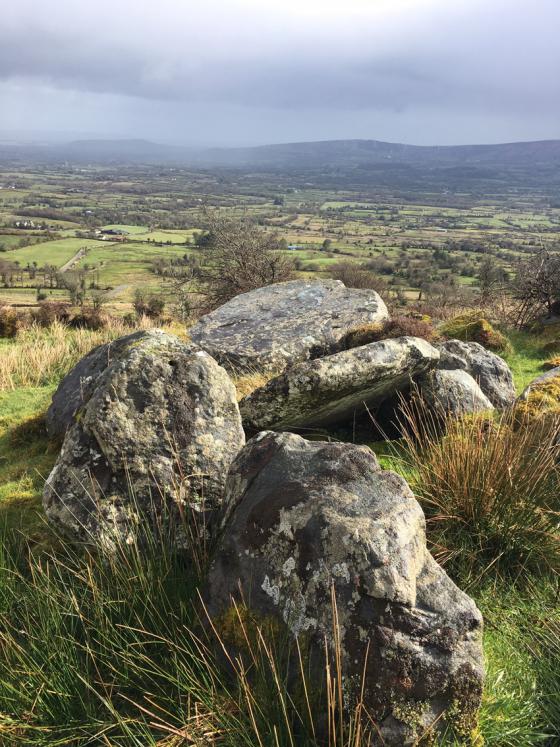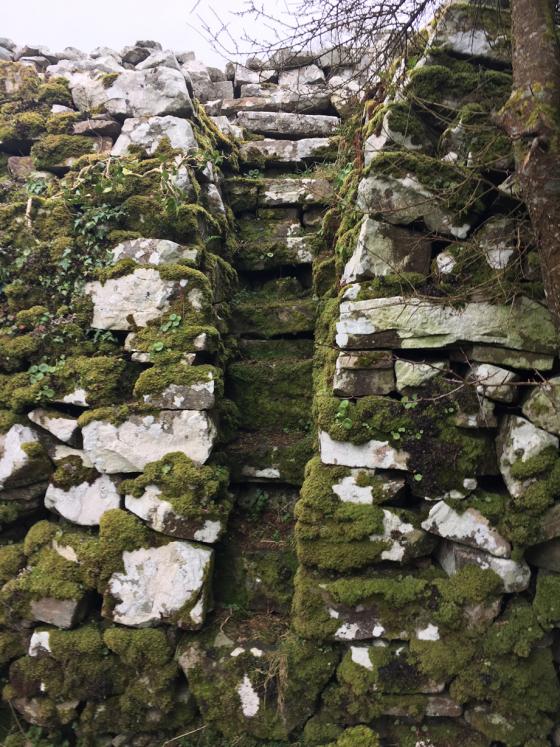After two relative disappointments earlier in the day this was the real deal. Aghnacally (achadh na calliagh? – field of the cailleach) is on the north-western slopes of Slieve Rushen (404m) and I’d always assumed that the megalithic tomb marked on the OS map was the Aughrim tomb, uprooted and taken off to the Slieve Russel hotel. Browsing the Historic Environment Viewer at archaeology.ie disabused me of that assumption – Aughrim is actually to the south-east of the mountain, five kilometres away.
There are a couple of ways to approach this isolated site: the difficult one that we took in Tircahan townland at H196245; the other at Drumbrughas at H207270. Either way brings you deep into the borderlands of north Cavan. I hadn’t got too many hopes for the site as the satellite photo shows heavy pine forest and an overgrown clearing. Thankfully we were in my mate Thomas’s 4X4 because after two kilometres up an ever decreasing road, then lane, then track, then forest track, I was ready to turn back. He wasn’t having any of that so on we went, up another two kilometres, through forest junctions, along overgrown tracks, deeper and deeper – this would be a pleasant day’s hike, the track beside the tomb leading up onto the top of the mountain.
All of the plantation trees in the vicinity of the tomb are felled, but the small, unplanted enclosure where it lies is overgrown. This is no bad thing with the vegetation deepening the mystery and enfolding the tomb in a magical atmosphere. However, there are vague trails here – we’re not the only visitors seeking out ancient knowledge. And then there it is, hidden among some stray pines and lots of summer grasses, what on first sight looks like a tumbledown wreck, but on further investigation reveals itself to be a fine wedge tomb.
Open at its south-west end, closed by a backstone at the north-east, with a much intact, covered chamber in between, this, at times infuriatingly overgrown, monument is, to use a well-worn cliché, a hidden gem. The split roofstone covers most of the gallery, just the westernmost sidestone of the northern wall jutting out beyond to the front of the tomb. Hunkering down, the cozy interior of the gallery looked inviting in a maybe-once-upon-a-time sort of way, but not now, thanks all the same. Sunshine intermittently broke through and lit the floor of the fern and clover-floored sepulchre.
There’s classic outer walling and some cairn here too but it’s all pretty much buried in the detritus and mulch. This is not an easy site to peruse – you’re in danger of falling down through some hidden void and spraining an ankle – but it’s well worth the hassle, the rugged structure revealing itself slowly, surviving down through the ages. It’s the type of place you don’t want to leave, a place where maybe, once in a blue moon, you might meet a stranger in search of an answer to an unspoken question.












































